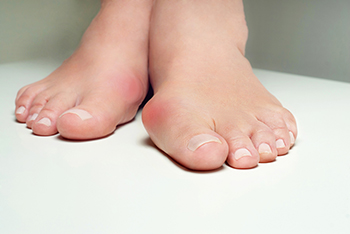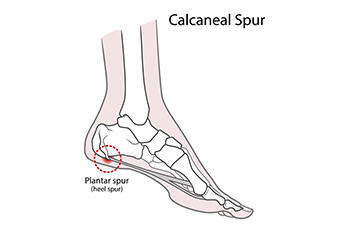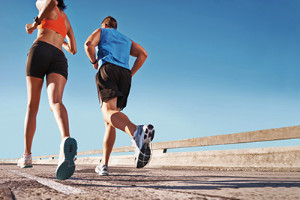Connect With Us
Blog
Items filtered by date: February 2025
Types and Causes of Bunions

Bunions are bony protrusions that form at the base of the big toe, often causing discomfort or pain. There are various types of bunions, each varying in severity. The mild form typically causes slight swelling and can often be managed with proper footwear or orthotics. In moderate cases, the deformity becomes more noticeable, leading to increased discomfort and difficulty with movement. Severe bunions can cause significant pain, misalignment of the toes, and even difficulty walking, requiring more intensive treatments or surgery. The main causes of bunions include genetic factors, abnormal foot mechanics, and wearing ill-fitting shoes. Conditions like arthritis can also contribute to their development. A bunionette is a smaller, similar deformity that forms on the outside of the foot, near the little toe. While bunions can be painful, early intervention and proper care from a podiatrist can prevent further complications and help manage symptoms effectively. If you notice the beginning signs of a bunion, it is suggested that you consult this type of doctor who can offer effective prevention and relief tips.
If you are suffering from bunion pain, contact Warren Levy, DPM of Armitage Podiatry Center. Our doctor can provide the care you need to keep you pain-free and on your feet.
What Is a Bunion?
Bunions are painful bony bumps that usually develop on the inside of the foot at the joint of the big toe. As the deformity increases over time, it may become painful to walk and wear shoes. Women are more likely to exacerbate existing bunions since they often wear tight, narrow shoes that shift their toes together. Bunion pain can be relieved by wearing wider shoes with enough room for the toes.
Causes
- Genetics – some people inherit feet that are more prone to bunion development
- Inflammatory Conditions - rheumatoid arthritis and polio may cause bunion development
Symptoms
- Redness and inflammation
- Pain and tenderness
- Callus or corns on the bump
- Restricted motion in the big toe
In order to diagnose your bunion, your podiatrist may ask about your medical history, symptoms, and general health. Your doctor might also order an x-ray to take a closer look at your feet. Nonsurgical treatment options include orthotics, padding, icing, changes in footwear, and medication. If nonsurgical treatments don’t alleviate your bunion pain, surgery may be necessary.
If you have any questions, please feel free to contact our office located in Chicago, IL . We offer the newest diagnostic and treatment technologies for all your foot care needs.
Symptoms and Risk Factors of Heel Spurs

A heel spur is a bony growth that forms on the underside of the heel bone, often caused by long-term strain on the foot’s ligaments and muscles. This condition usually develops as a result of repetitive stress, such as excessive walking or running, which can lead to inflammation and the formation of calcium deposits. The primary symptom of a heel spur is sharp pain, especially when standing or walking after long periods of rest. The pain may decrease as the foot warms up, but it can return with prolonged activity. Risk factors for developing a heel spur include having flat feet, being overweight, wearing poorly fitting shoes, or engaging in activities that put excessive pressure on the feet, like running on hard surfaces. Additionally, people with conditions like arthritis or diabetes may also be at a higher risk. If you have heel pain, it is suggested that you consult a podiatrist who can provide an accurate diagnosis and appropriate treatment.
Heel spurs can be incredibly painful and sometimes may make you unable to participate in physical activities. To get medical care for your heel spurs, contact Warren Levy, DPM from Armitage Podiatry Center. Our doctor will do everything possible to treat your condition.
Heels Spurs
Heel spurs are formed by calcium deposits on the back of the foot where the heel is. This can also be caused by small fragments of bone breaking off one section of the foot, attaching onto the back of the foot. Heel spurs can also be bone growth on the back of the foot and may grow in the direction of the arch of the foot.
Older individuals usually suffer from heel spurs and pain sometimes intensifies with age. One of the main condition's spurs are related to is plantar fasciitis.
Pain
The pain associated with spurs is often because of weight placed on the feet. When someone is walking, their entire weight is concentrated on the feet. Bone spurs then have the tendency to affect other bones and tissues around the foot. As the pain continues, the feet will become tender and sensitive over time.
Treatments
There are many ways to treat heel spurs. If one is suffering from heel spurs in conjunction with pain, there are several methods for healing. Medication, surgery, and herbal care are some options.
If you have any questions feel free to contact our office located in Chicago, IL . We offer the latest in diagnostic and treatment technology to meet your needs.
Preventing Running Injuries

Running injuries, such as shin splints, plantar fasciitis, Achilles tendonitis, and stress fractures, occur due to repetitive stress on the feet and legs. They often result from overtraining, wearing improper footwear, poor running form, or a lack of flexibility and strength. Prevention begins with wearing well-fitting, supportive running shoes designed for your foot type and the running terrain. Gradually increase mileage and intensity to avoid overloading your muscles and joints. Incorporate strength training, particularly for the calves, hamstrings, and core, to support proper running mechanics. Stretching regularly helps maintain flexibility, reducing the risk of strains. Cross-training with low-impact activities like swimming or cycling can also minimize stress on running muscles. If you experience persistent pain or discomfort during or after running, it is suggested that you consult a podiatrist for a gait analysis and personalized advice to prevent further injuries and keep you running safely.
All runners should take extra precaution when trying to avoid injury. If you have any concerns about your feet, contact Warren Levy, DPM of Armitage Podiatry Center. Our doctor will treat your foot and ankle needs.
How to Prevent Running Injuries
There are a lot of mistakes a runner can make prior to a workout that can induce injury. A lot of athletes tend to overstretch before running, instead of saving those workouts for a post-run routine. Deep lunges and hand-to-toe hamstring pulls should be performed after a workout instead of during a warmup. Another common mistake is jumping into an intense routine before your body is physically prepared for it. You should try to ease your way into long-distance running instead of forcing yourself to rush into it.
More Tips for Preventing Injury
- Incorporate Strength Training into Workouts - This will help improve the body’s overall athleticism
- Improve and Maintain Your Flexibility – Stretching everyday will help improve overall performance
- “Warm Up” Before Running and “Cool Down” Afterward – A warm up of 5-10 minutes helps get rid of lactic acid in the muscles and prevents delayed muscle soreness
- Cross-Training is Crucial
- Wear Proper Running Shoes
- Have a Formal Gait Analysis – Poor biomechanics can easily cause injury
If you have any questions, please feel free to contact our office located in Chicago, IL . We offer the newest diagnostic and treatment technologies for all your foot care needs.
